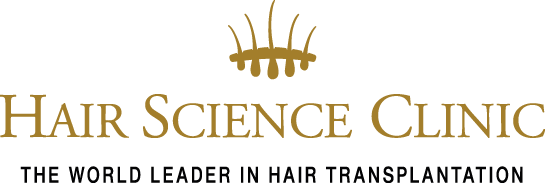Are we witnessing a new dawn for baldness treatments?
Scientists have been testing new methods of hair transplantation, which could be more efficient and less invasive than corrent procedures.
Revolutionary
At Hair Science Clinic, one of the world’s leading hair transplantation clinics with a centre in London, as well as multiple other locations around the globe, founder dr. Coen Gho has noticed a sudden spike in demand over the past year.
“With all the lockdowns, some people have saved a lot of money, and so they’re now spending it on the most valuable asset they have: themselves. And especially on their looks!”, says dr.Gho. “I would say the current demand is three or four times higher than before Covid.”
We invented Hair Stem Cell Transplantation
But this surge in demand for hair loss treatments is also fostering new ideas. Dr. Gho has developed a reputation as a leading innovator within the hair transplantation world, through pioneering a technique medically called partial longitudinal follicular unit extraction. Better known as the patented Hair Stem Cell Transplantation.
FUT and FUE are outdated
Most transplants remove entire hair follicles from “donor areas” at the back and sides of the scalp, and relocate them to bald patches, but the main downside is that this incurs a risk of scarring, as well as leaving the donor areas relatively sparse.
Dr. Gho’s method attempts to avoid these problems by only using parts of the follicle. It works by stimulating the stem cells within that small piece of tissue to generate new hairs. At the moment, this yields two hairs from a single fragment of a follicle, but he is now developing a separate technique which could potentially generate ten hairs.
This could make transplants much more viable not only for men, but also for women who suffer from female pattern baldness. According to NHS statistics, an estimated 8 million women in the UK suffer from a form of hair loss.
Future treatments
“Right now a typical treatment involves taking grafts from 1400 hair follicles, which means 3000 new hairs,” says Gho. “Can you imagine what we can achieve, if we could use those same grafts to generate 10,000 hairs? This is very important as right now the big hurdle in hair transplants for women is creating sufficient density.”
Gho has just gained approval to test the technique in female patients in research studies. If all goes well, he hopes that it may be possible to offer this as a treatment in the next four to five years.
Cultivating hair follicle cells
Gho’s work belongs to one of a select number of advanced new research projects taking place which are attempting to move hair loss treatments to the next level. In Japan, the Riken research institute has one of the world’s leading clinical programs developing stem cell based therapies for both male and female pattern baldness, and earlier this year, their scientists made a key research breakthrough.
Using stem cells, they found a way to multiply human hair follicle cells by 100-fold in the lab, a breakthrough which was published in the journal Scientific Reports. In the future, this could enable scientists to extract hair from donor areas of the scalp, and use that to grow an entire new head of hair in a dish, which would then be transplanted back to the patient.
This could allow surgeons to treat patients who are almost completely bald. “At the moment there is a limit to the size of the area that can be treated,” says Takashi Tsuji, the scientist leading the project. “The potential to take 100 hair follicles and amplify them to generate 10,000 hair follicles with our technology would mean that even patients with extensive alopecia would never have pattern baldness again.”
However, so far this has only been done in a petri dish, and in mice. Tsuji is now looking to undergo the far more complex process of performing the treatment in a clinical trial, a costly process which requires obtaining 500 million yen (approximately £3.2 million) in funding. Tsuji has turned to crowdfunding to try and raise the money from the public, as well as appealing to investors and start-ups around the world.
“We were working with a start-up company, but partly due to the Covid-19 pandemic, their business was suspended, bringing our work to a halt just before moving to the clinical research stage,” he says. “As soon as we can get the funding, a clinical study could be started within a few months. We would then need another year to examine and reveal the efficacy of the technology. If efficacy is confirmed, we expect that a pay-to-participate clinical program will begin within two years in Japan.”
Injectable therapies
One alternative to hair transplantation which has gained traction in recent years is platelet-rich plasma (PRP) therapy, a three-step treatment process in which the patient’s blood is drawn, before platelet concentrations are first extracted, and then re-injected into the scalp.
The idea is that platelets – a component of blood which promotes tissue repair – could help restore normal hair growth. A number of studies have found that PRP can reduce hair loss, as well as increasing both the diameter and density of hairs.
However, this is not a cure and maintenance injections tend to be recommended every three to six months which can make it an expensive long-term solution. Side effects, ranging from headache to scalp tenderness, have also been reported.
Instead, Cheng is investigating another potential injectable therapy utilising exosomes, tiny, fluid filled sacs which are secreted by all cells, including those in hair. The exosomes will carry messages to the hair follicles, in the form of small molecules called microRNAs which regulate gene expression, and instruct them to resume normal growth.
Over the last year, he has identified a microRNA which plays an important role in regulating a particular pathway involved in follicle regeneration.
“One of the common things in hair loss patients is that the micro-environment in the hair follicles is highly inflammatory,” says Cheng. “The blood flow and normal signaling is disrupted, so the follicles are not functioning normally.”
Cheng’s idea is to take exosomes from cells in healthy hair follicles, which contain this microRNA, and inject them into affected regions of the scalp. “We’re using exosomes from cells that carry healthy inflammation and pro hair growth information,” he says. “And once those exosomes are injected, they’re sending messages to the hibernating cells to actually promote the hair regrowth.”
So far Cheng has tested this approach in mice, and found that it can achieve a six to seven fold increase in hair growth compared to traditional hair loss drugs such as minoxidil. He is now conducting experiments to see whether the same results can be achieved in human hair cells in the lab.
“We’re cautiously optimistic that we can bring this to the clinic in the next five years,” he says. “If the lab experiments work, we will probably collaborate with one of the dermatology of cosmetic medicine schools to run a clinical trial. We’re also actively speaking to a few venture capital firms who are interested in this technology and believe it may have a good future.”



